Anna Laetitia Barbauld, Radical Female Poet
Anna Laetitia Aikin, better known under her married name of Barbauld, was born on the 20th June 1743 in Leicestershire. Her father John Aikin was a Unitarian, a religion whose name comes from their rejection of belief in the “holy trinity” of God, Jesus and Holy Spirit. As a result the religion did not fall under the Toleration Act (which allowed non-Anglican Protestants who believed in the Trinity limited religious and civil freedom). In fact at the time Unitarians were under the same strictures as Catholics, though they carried far less social stigma. Most Presbyterians in England at the time were Unitarian in theology, though their religious beliefs were still evolving. Among these strictures was a bar on attending either of the English universities, which led to the founding of “dissenting academies”, educational institutions which would give a university-level education though they could not give out the degrees. These had a shaky legal footing up until 1723, but by the time John attended Kibworth Academy in Leicestershire they had become an accepted part of the educational framework of England. John did receive a university degree by going to Scotland and studying at Aberdeen, which was where he picked up his Unitarian beliefs. He originally planned to minister to a congregation, but he found that he was constitutionally unsuited for the task. Instead he turned to teaching, and it was while he was working as a tutor that Nancy (as she was known) and her brother John were born. Nancy’s mother was Jane Aikin, daughter of the founder of Kibworth Academy. It may have been this connection that secured John a position in 1758 as one of the three founding tutors of what became known as the “cradle of Unitarianism” – Warrington Academy.
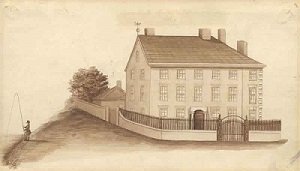
Warrington Academy was also the cradle of Nancy’s mind. Though as a woman she could not receive an “official” education, she had persuaded her father to teach her the classics and having the run of the academy she made full use of the opportunities to learn. She had grown up surrounded by boys – the only woman she interacted with in her childhood to any real degree was her mother, who didn’t know quite what to make of the studious Nancy. She was always immensely proud of her, certainly – but she seemed to be worried that Nancy would be a permanent spinster, and her judgemental attitude seems to have left Nancy half-convinced that she wasn’t, and would never be, a “proper” woman. A more positive influence on her was Joseph Priestley, who came to Warrington to teach in 1761. Priestley would go on to become one of the most notable British scientists of the 18th century, however it was not his scientific studies (or his attempts to tie them into his theological beliefs) that affected Nancy. Rather it was the twin examples of his home life (the Priestleys embodied the happy and supportive marriage), and of his literary aspirations. Priestley had written several poems [1] which, though not apparently very good, opened Nancy’s eyes to the idea of writing poems of her own. One of her first poems was actually addressed to Priestley. He had captured a mouse and intended to use it in his experiments the next day by exposing it to various mixes of gases, which would inevitably prove fatal to the mouse. That morning he found a petition, written from the mouse’s viewpoint, stuck in the bars of its cage.
Oh! hear a pensive captive’s prayer,
For liberty that sighs;
And never let thine heart be shut
Against the prisoner’s cries.For here forlorn and sad I sit,
Within the wiry grate;
And tremble at the approaching morn,
Which brings impending fate.If ever thy breast with freedom glowed,
And spurned a tyrant’s chain,
Let not thy strong oppressive force
A free-born mouse detain.
The petition (which went on to praise “the well taught philosophic mind” that had compassion for all living things) proved successful, and the mouse was released. Another poem she wrote while at the academy was equally praised by her contemporaries. Corsica, a rousing piece in support of the Corsican independence movement, was definitely a prefiguring of much of Nancy’s later writing. The two poems, along with several others, were hugely popular among the students and staff at the academy. Several of her poems were included in a collection of religious poetry in 1772. The reception persuaded Nancy to release a book, simply entitled Poems, in 1773. The book was very successful, proving both influential and popular and establishing Nancy as a major figure in English poetry. Coleridge and Wordsworth both cited Poems as an influence on their early writings.
It was just as she was getting popular that Nancy became Anna Laetitia Barbauld, the name under which she was famous. Her marriage in 1774 was the result of a protracted and somewhat strained courtship. Throughout her twenties, Nancy hadn’t wanted for suitors, as her wit and beauty turned the heads of many of the students and scholars who came to Warrington. Two of the most notable were Jean-Paul Marat and Archibald Hamilton Rowan, one a successful French revolutionary (who was stabbed in his bath), the other a leading light of the United Irishmen who was imprisoned for seditious libel and then forced into exile in Germany. Clearly Nancy’s own radical tendencies were attracting like-minded types. Doubtless to her mother’s despair she spurned all the offers, until Rochemont Barbauld (a French Huguenot refugee who had attended Warrington) proposed to her. It was a match that some regarded as ill thought out – Rochemont suffered from mental illness (possibly bipolar disorder) and Nancy was told by a friend that he had suffered a breakdown. This only strengthened Nancy’s resolve, as she had no wish to be the cause of him suffering another. They were married in 1774, and Nancy seems to have found it a happy marriage. In 1778 she wrote a poem about her husband, which ends:
We’ll little care what others do,
And where they go, and what they say;
Our bliss, all inward and our own,
Would only tarnished be, by being shown.
That talking restless world shall see,
Spite of the world we’ll happy be;
But none shall know
How much we’re so,
Save only Love, and we.

Rochemont was a minister at Palgrave, a small village in Suffolk. Nancy and Rochemont decided to found their own academy there, opening in 1774 with eight boys. By ten years later the had five times that many. The school was an unusual one for the time – it deliberately avoided corporal punishment and instead operated on a system of fines, non-physical punishments (such as making the student endure a dreary lecture) and even in some cases making the offender the subject of a “school trial” where the other boys got to prosecute, defend and decide punishment for them. This clearly had an impact on one pupil, Thomas Denman, who would go on to be Lord Chief Justice of England and Wales. Another pupil at Palgrave was Thomas Douglas, who unexpectedly became Earl of Selkirk when his brother died young. He is fondly remembered in Newfoundland for having used his fortune to fund the colonization of Canada by dispossessed Scottish crofters. Nancy was at the forefront of educating he young pupils – one of them, William Taylor, described her as “the mother of his mind”.
Nancy’s interest in education was not entirely professionally motivated. Somehow she and Rochemont determined that they would not be able to have any children of their own. The exact reason is unsurprisingly unknown, but it was a correct deduction as Nancy never did have any children. However she did desperately desire to be a mother, and so in 1777 she and Rochemont persuaded her brother John (who she had always been extremely close to) to let them adopt his second son, Charles, who was two years old at the time. It was Charles who prompted Nancy to turn her talents to a new area, the writing of books suited for children aged two or three. Though reading primers did exist, to Nancy’s mind they were all hideously inadequate at being understood by a child for, as she wrote, “a grave remark or connected story is always above his capacity; and nonsense is always below it”. In contrast to this she developed a repetitive simple style that will be immediately familiar to both modern readers and to those subjected to children’s television:
Ink is black, and papa’s shoes are black.
Paper is white, and Charles’s frock is white.
Grass is green. The sky is blue.
Charles’s shoes are red. Pretty red shoes.
Cowslips are yellow. The table is brown.
White, black, red, green, blue, yellow, brown.
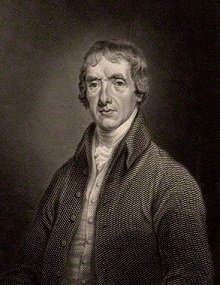
Note the emphasis on the child’s senses – Nancy was very familiar with the work of John Locke, who wrote in Some Thoughts Concerning Education on the importance of creating associations in infant minds. In addition to this the text of the book explicitly sets out to promote good behaviour in children, and a lesson in counting raisins is immediately followed by a prompt to share them with the other children. As the books progress the complexity of the texts increase, progressing to more complex narratives and eventually into poetic description. Nancy published the four books she wrote for Charles as Lessons for Children in 1778 and 1779. In addition to the writing style she also ensured that they were published in in large type, with double spaces between the words, in order to more easily allow the child to tel the words apart. The books created a sensation, and revolutionised the field of children’s literature in both Britain and America. Lessons remained in print for over a century, and the style and construction of the book remains standard to this day. Nancy followed it up with Hymns in Prose for Children in 1781, a selection of religiously themed prose passages inspired by the Psalms and designed for children to memorise and recite. The deliberately naive style of Lessons and Hymns proved influential to adults as well as children – both William Wordsworth and William Blake were inspired to create poetry that utilised the technique. Not all were so thrilled that such a promising poet had “lowered herself” to writing children’s books. Samuel Johnson, who had admired her first book, lambasted her for “marrying a little Presbyterian parson, who keeps an infant boarding-school”. Most of the “serious poets” took apparent umbrage to her teaching the children that they were superior to the animals, while others among the Romantic school took issue with the very idea of educating children in a rational matter. The real root of their complaint seemed to be horror that somebody they had considered “one of them” was writing for children – missing the vital point that by doing so, and doing so in such a successful manner, Nancy was actually raising the world of children’s literature up to the point where dozens were inspired to create children’s books of their own, creating a field that flourishes to this day. Nancy’s own opinion on the matter is captured in the end of her introduction to the books:
The task is humble, but not mean; for to lay the first stone of a noble building, and to plant the first idea in a human mind, can be no dishonour to any hand.

It was fortunate that the books were such a success, as the Barbaulds were forced to close Palgrave Academy in 1785 due to the stress proving too much for Rochement’s fragile mental state. Nancy’s mother died around the same time. She had been incredibly proud of her daughter’s books for children, and the two had grown closer as a result. In order to get away from it all, the Barbauld family went to visit Rochemont’s native France, returning in June of 1786. They settled in London, where Rochemont was minister to a congregation in Hampstead and Nancy continued to tutor a few children. And, after a gap of several years, she also began to write again. The visit to France had reawakened her radical sensibilities, and she became a campaigner for the rights of Unitarians and Presbyterians. The politician Charles James Fox, one of the leaders of the opposition, was campaigning at the time to have the Test and Corporation acts repealed. These laws blocked anyone from holding public office who had not participated in an Anglican Communion within the last month, and who would not swear oaths pledging allegiance to the Crown and affirming the Anglican belief that any disobedience to it was inherently sinful. Though the Acts constrained Catholics as much as Presbyterians, it was the latter that it had been aimed at in the aftermath of the English Civil War. Fox’s attempts to get the Acts off the books were unsuccessful (largely due to the ongoing fear of any dissent prompted by the French Revolution), but they did inspire Nancy to write An Address to the Opposers of the Repeal of the Corporation and Test Acts:
We could wish to be considered as children of the State, though we are not so of the Church. She must excuse us if we look upon the alliance between her and the State as an ill sorted union, and herself as a mother-in-law who, with the too frequent arts of that relation, is ever endeavouring to prejudice the State…for the sake of appropriating a larger portion to her own children. We claim no share in the dowry of her who is not our mother, but we may be pardoned for thinking it hard to be deprived of the inheritance of our father.
The article was published as a pamphlet signed by “A Dissenter”, one among many. But An Address stood out from the pack as a reasoned argument, calm but uncompromising. Several papers published portions of it and Nancy wrote several revised versions over the next few months. One clergyman, while disagreeing with the sentiments of the piece commented of the writer “his conceptions are strong, and his language elegant”; when Nancy was revealed as the author the clergyman described his reaction as “infinite surprise, not unmixed with concern” to learning that An Address came from “a female pen!”
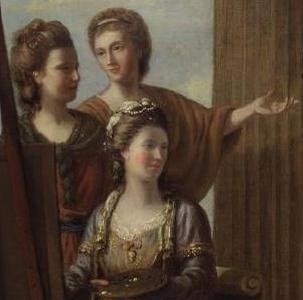
Nancy went on to write more political pieces, arguing for reform. One of the most famous was her Epistle to William Wilberforce , addressed to the famous abolitionist [2] and lamenting the moral harm that endorsing slavery caused the nation. She also wrote articles arguing for pacifism and equal rights for women, and celebrating the reforms of the early French Revolution. This association with radical thinking did Dissenters such as her no favours at the time though. Her friend Dr Priestley had his house attacked by a mob, while her brother John was forced to move from the country to more tolerant London. This did have the benefit of bringing the siblings together to write. The pair wrote a series of six volumes of children’s fiction, under the title of Evenings at Home, between 1792 and 1796. The books were hugely successful, and one later writer said that every family she knew as a child had a copy. The success of Evenings at Home led to John being offered the post of editor at a new magazine, known simply as The Monthly Magazine. [3] Naturally, his sister was a frequent contributor.
The 19th century brought a great deal of unhappiness into Nancy’s life. Her husband Rochemont’s mental state deteriorated greatly, and in 1802 the family moved to Stoke Newington in north London to be closer to John in case his support was needed. Rochemont became more and more disturbed, culminating in January 1808 when he grabbed a knife from the table and chased Nancy around the room. She was forced to jump out of the window to escape him. As a result of this, Nancy was forced to have him committed into care. That November he managed to escape from his keeper and drowned himself in a river. It was a tragic end to what had been a happy marriage.
No more the storms that wrecked thy peace
Shall tear that gentle breast;
Nor Summer’s rage, nor Winter’s cold,
Thy poor, poor frame molest.– Dirge
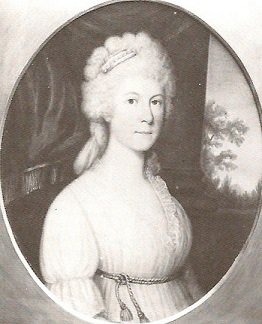
In 1810 Nancy published The British Novelists – a set of fifty great British novels, each introduced with an essay introducing the reader to the writer and giving their place in the canon. At the time the concept of a “novel” was still a pretty new one to British literature, and indeed fiction-writing in general was only just beginning to be accepted as a worthwhile genre. It was an epic piece of work, and the next year Nancy followed it up with what many consider to be her finest poem. Sadly it was also to be her last.
And think’st thou, Britain, still to sit at ease,
An island Queen amidst thy subject seas,
While the vext billows, in their distant roar,
But soothe thy slumbers, and but kiss thy shore?
To sport in wars, while danger keeps aloof,
Thy grassy turf unbruised by hostile hoof?
Eighteen Hundred and Eleven was written as a rebuke to British participation in the Napoleonic wars, which Nancy saw as a vain attempt to keep the old order of Europe intact and to hold back the tide of history. It was insightful, well written, uncompromising and almost universally derided by the British literary establishment. Nancy’s view of the inevitable decline of British fortunes (and her contention that the USA would take over as a Great Power) was in direct opposition to the jingoistic mood of the time. Though Nancy was no stranger to controversy, the sheer volume of hatred and negativity shocked her. Most hurtful of all perhaps were the criticisms from those who had previously cited her as an influence, such as Coleridge and Wordsworth. Perhaps they were embarrassed that they had let go of their own ideals and sunk into the comfortable world of the Establishment, while the sixty-eight year old Anna Laetitia Barbauld was still manning the barricades. Whatever the reasons for the attacks, the result was the same. Nancy never published another piece for the rest of her life.
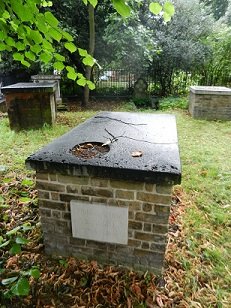
Nancy died in 1825, aged eighty two years old. She lived long enough to see the reforms begin that would eventually lead to the repeal of the Test Acts in 1828. She was buried in Stoke Newington, and was praised in obituaries throughout the country as one of the greatest British writers. However as the 19th century progressed, she was gradually erased from history. The words written by Coleridge and Johnson and Wordsworth and Lamb to insult her were given greater weight than the actual quality of the works themselves, which all “serious” scholars excused themselves from reading once they found out that she had written “for children”. Moreover the retroactively written history of the Great British Romantic Poets had no room in it for a politically radical female Presbyterian. Credit for keeping Anna Barbauld’s name alive has to go to her biographers – her brother’s daughter Lucy Aiken and her adopted son Charles’s daughter Anna Letitia Le Breton. Both were writers, and both were proud of their Nancy. Sadly it was not until the Sixties that the literary establishment began to realise the extent of Anna Barbauld’s influence – and not until after many of her unpublished papers had been lost in the Blitz during World War 2. Even today she remains a relatively obscure figure – one far less venerated for her contribution to literature than she deserves.
Images via wikimedia except where stated.
[1] Sadly I could not find any examples of them, though I did find Priestley advocating for the use of poems to teach history. His musing on the inability of philosophers to write good poetry may explain why he didn’t publish them.
[2] Who would eventually get the slave trade outlawed in 1806.
[3] Most famous for being the first magazine to publish Charles Dickens, forty years later.

